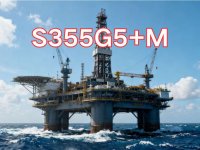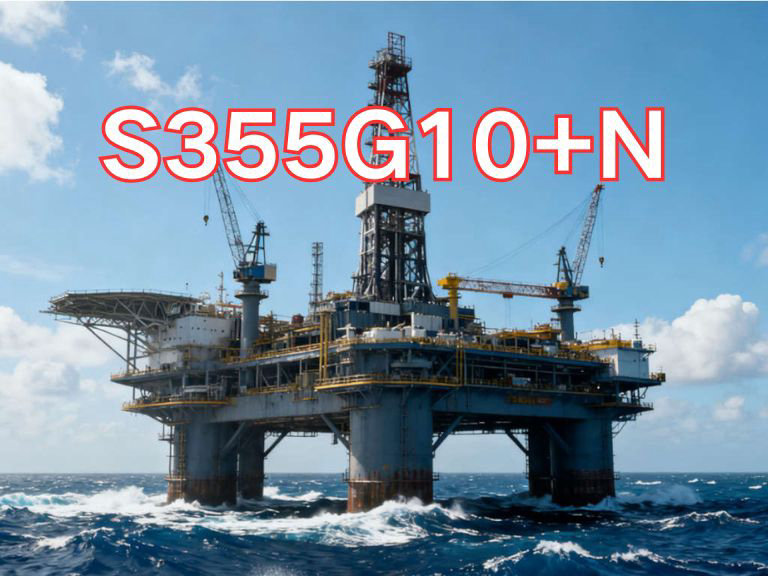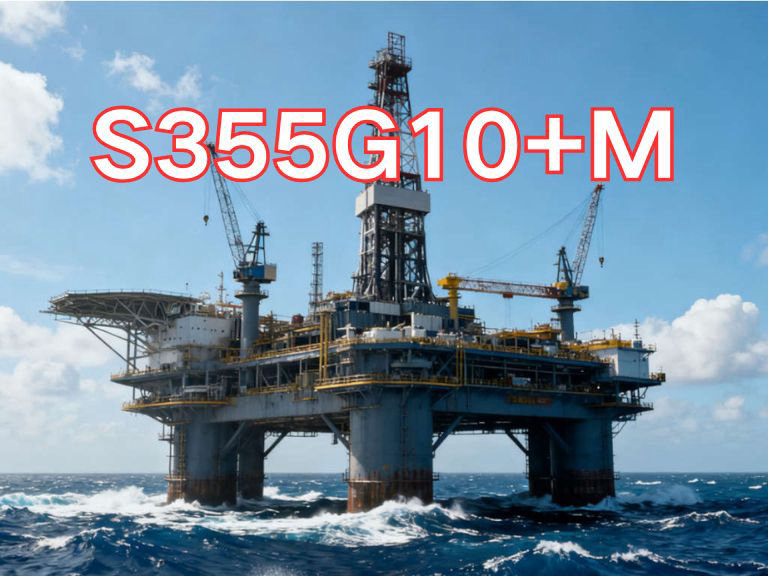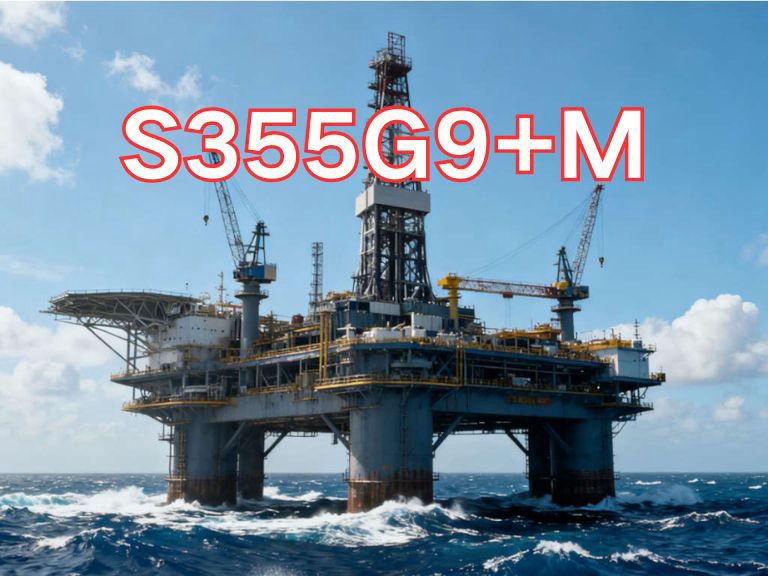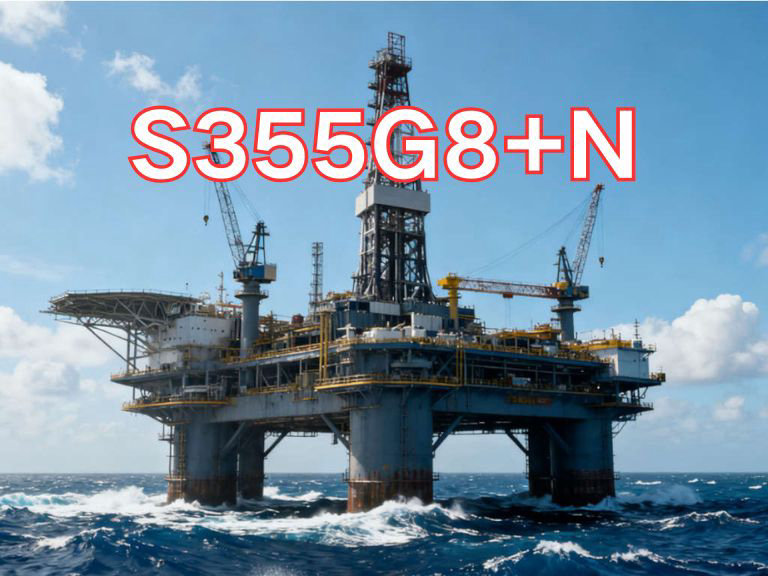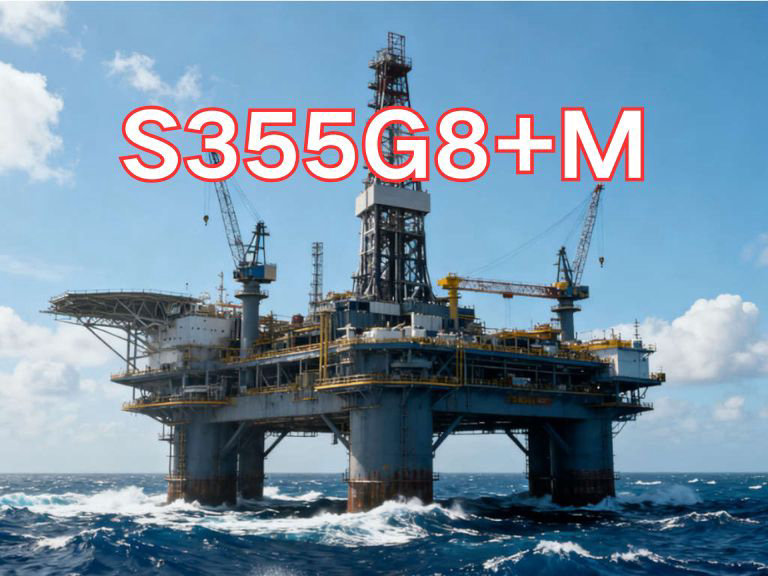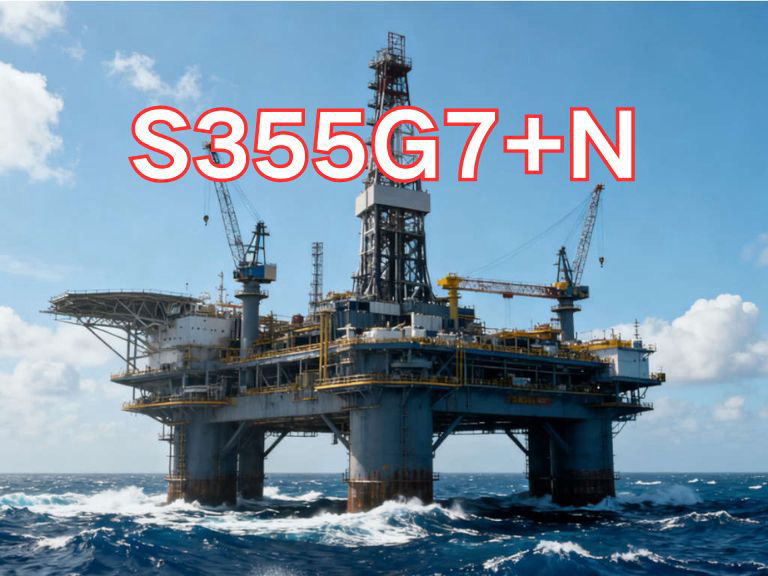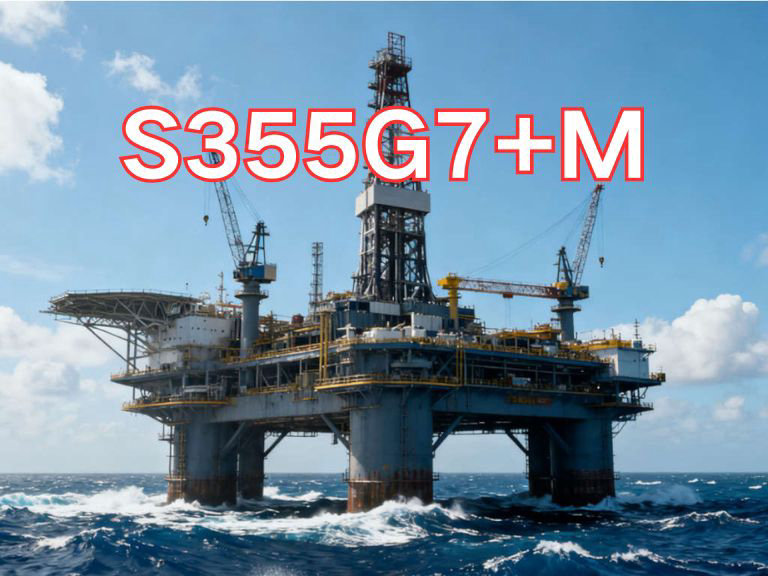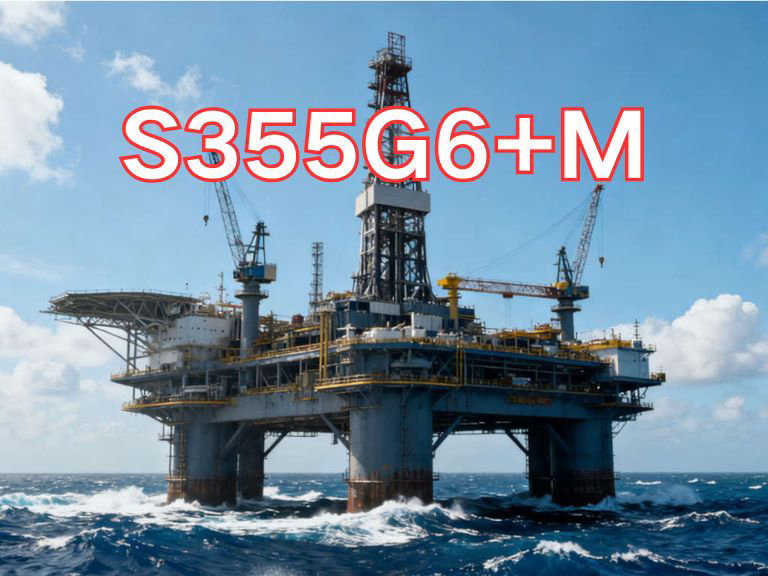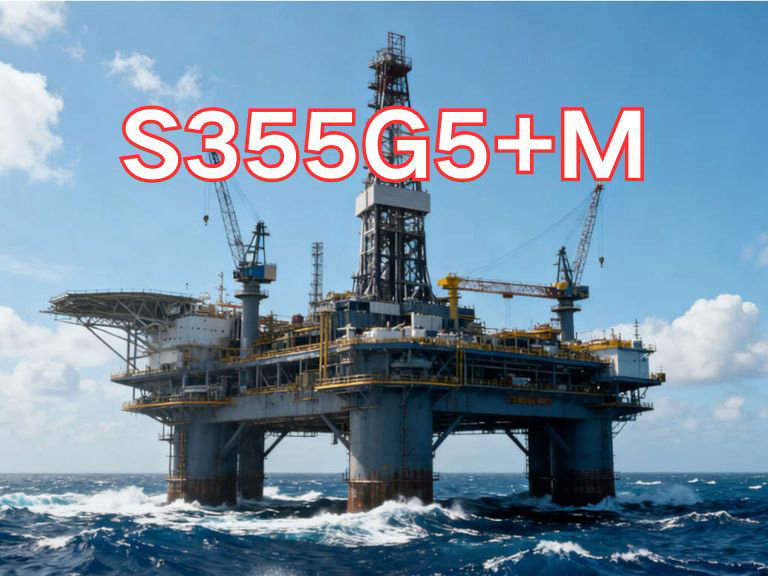

S355G5+M
S355G5+M is a high-strength, high-toughness steel plate designed for offshore and marine engineering applications. Its designation follows the European standard (EN) steel nomenclature system and is specifically engineered for welded structures operating in extreme environments, such as offshore platforms, marine wind turbine foundations, floating units, and subsea manifolds. The "S" stands for "Structural steel," indicating its use in load-bearing and critical structural components. "355" denotes the specified minimum yield strength of 355 MPa at room temperature, placing it in the high-strength category. "G5" refers to the quality grade, specifying a fine-grain steel produced by thermomechanical rolling (TMCP) or quenching and tempering (Q+T), with stringent requirements for ultra-low-temperature toughness. Specifically, the G5 grade requires Charpy V-notch impact testing at -60°C, with an average absorbed energy of no less than 47 J for three specimens and no single specimen below 35 J, demonstrating exceptional resistance to brittle fracture—making it particularly suitable for polar regions, deep-sea applications, or other ultra-low-temperature environments. The suffix "+M" indicates the delivery condition: thermomechanically rolled. This process involves precise control of rolling temperature and cooling rate, enabling grain refinement and microstructural strengthening during deformation, thereby achieving high strength and toughness without significantly increasing the carbon equivalent (CEV), while maintaining good weldability.
The main characteristics of S355G5+M steel plate include high strength, outstanding cryogenic toughness, and excellent weldability. Its chemical composition is based on carbon and manganese, with small additions of microalloying elements such as niobium, vanadium, and titanium, which work synergistically through grain refinement, precipitation hardening, and phase transformation strengthening to significantly enhance overall performance. The thermomechanical rolling process ("M" condition) results in a fine, uniform microstructure—typically acicular ferrite or bainite—improving not only strength and toughness but also through-thickness uniformity and resistance to lamellar tearing. The tensile strength ranges from 470 to 630 MPa, with elongation (A5) ≥20%, providing good ductility and adaptability under dynamic loading. Its high impact toughness at -60°C makes it a key material for Arctic engineering, deepwater structures, and high-latitude wind power projects, effectively preventing brittle fracture and ensuring long-term structural integrity in extreme conditions. Additionally, S355G5+M has a tightly controlled CEV, offering excellent weldability compatible with processes such as submerged arc welding (SAW) and gas metal arc welding (GMAW), with stable and reliable weld joint quality.
S355G5+M is widely used in critical applications such as Arctic offshore platforms, deepwater jackets, monopiles and transition pieces for offshore wind farms, and support structures for floating production storage and offloading (FPSO) units—where material performance demands are exceptionally high.
The current standard for S355G5+M steel plate is the European standard EN 10225:2023 "Weldable structural steels for use in offshore structures — Technical delivery conditions for fabricated or rolled products". This standard specifically addresses offshore and marine engineering structures, detailing requirements for chemical composition, mechanical properties, impact toughness, manufacturing processes, non-destructive testing, and inspection procedures. It serves as a key technical reference for offshore design and construction. Due to its superior performance, S355G5+M has become an indispensable material in modern high-end offshore engineering.

Ultrasonic Testing (UT)
A key non-destructive testing technique that uses high-frequency sound waves to detect internal flaws in steel plates. The probe emits sound waves, which reflect when encountering defects such as cracks or inclusions. The receiver captures the echoes, enabling precise determination of defect location and size. With high sensitivity, strong penetration, and fast inspection speed, UT effectively ensures internal quality, widely used in the production of heavy plates, pressure vessel plates, and other high-end products to guarantee safety and reliability.

Magnetic Particle Testing (MT)
A common surface inspection method that magnetizes the workpiece, causing leakage magnetic fields at surface or near-surface defects like cracks or inclusions, which attract magnetic particles to form visible indications. Simple to operate and highly sensitive, MT is suitable for rapid inspection of surface and near-surface flaws in ferromagnetic materials, widely used for online or offline inspection of plate edges, ends, and welds, ensuring product quality and safety.

Penetrant Testing (PT)
A non-destructive method for detecting surface-breaking flaws. A penetrant liquid is applied to the cleaned steel surface, allowing it to seep into defects such as cracks or pores. After removing excess penetrant, a developer is applied, causing the trapped penetrant to bleed out and form visible indications. Simple and cost-effective, PT is suitable for inspecting surface defects in various non-porous materials, commonly used for welds, castings, and complex components, effectively ensuring surface quality of steel plates.

